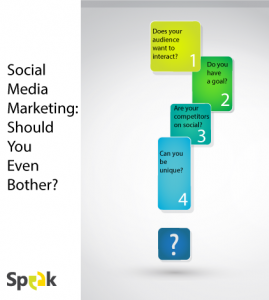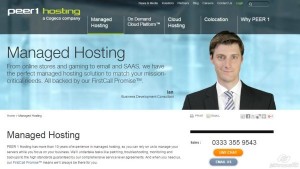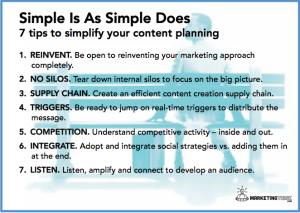
Solidarity and support in good times and bad
In many ways, our individual worlds are shaped by the events that befall us. Some are glorious and uplifting, others tragic and traumatic. Every life-changing event we face shapes our perceptions. Big events, for good or ill, help to define us. This is particularly true during tough times. Yet it’s how we respond to a crisis, and how we receive support through it, that ultimately influences our determination of society, along with the role we decide to play as members of it. The past 15 years have been trying, even daunting, periods for every global citizen. We have weathered economic collapse, wars, public violence, an erosion of job security and benefits we once took for granted, natural disasters and the dynamics of more fluctuating and rapidly flowing business climate. That’s a lot of stress.
Despite all the positive things that took place during the same decade-and-a-half, it’s sometimes easier to dwell on depression rather than elation because stress claims such a heavy toll on our minds and bodies. Regardless of the event or the background of the person connected to it, supporting talent through difficult situations is imperative to success. Today’s organizational leaders and managers are pulled in countless directions. However, MSPs and their staffing partners, who have the time and commitment to focus on the needs of their talent, can make a tremendous positive impact on workers struggling through painful circumstances — an approach that also strengthens business.
The high cost of stress in the workplace
Happiness at work affects happiness overall, and vice versa. In the Allstate/National Journal Heartland Monitor Poll of 1,000 working U.S. adults, 76 percent placed a higher priority on personal life than on their jobs. And 67 percent of those surveyed said they would choose scheduling flexibility, telecommuting and compressed work weeks over salary hikes.
According to an examination of 228 studies, conducted jointly by professors at Stanford and Harvard business schools, work-related stress contributes to at least 120,000 deaths each year, accounting for $ 190 billion in U.S. healthcare costs.
- Concerns about job security drove up the odds of reporting poor health by 50 percent.
- Long work hours led to a 20-percent increase in mortality rates.
- Physician-diagnosed illnesses rose by 35 percent for those with overly demanding jobs.
“The deaths are comparable to the fourth- and fifth-largest causes of death in the country: heart disease and accidents,” said Stefanos A. Zenios, a professor of operations, information and technology at Stanford Graduate School of Business. “It’s more than deaths from diabetes, Alzheimer’s or influenza.”
The biggest contributing factors, the researchers discovered, were economic insecurity, unemployment, layoffs, no job control, the absence of health benefits and poor work-life balance. For instance, employees who felt their managers’ demands prevented them from attending to important family matters after hours were 90 percent more likely to seek medical care. Those in hostile or unfair business environments were 50 percent more likely.
For recruiters trying to fill the glut of vacancies for their clients, or shore up an enterprise-wide MSP program, these situations can complicate sourcing efforts, making the prospect of selling a job opening quite difficult, particularly when courting in-demand passive candidates who are standing at uncertain crossroads in their careers.
Yet for talent already on the job, a sudden traumatic event can make it hard to concentrate and move forward. Unexpected upsets change the game and complicate other existing difficulties. Not every individual reacts to tragedy or stress the same way. People attempting to deal with dramatic changes in life — such as the loss of a loved one, the destruction of property to a flood, crippling debt, time poverty, falling victim to domestic violence, or witnessing an outbreak of armed conflict — can all end up with Post Traumatic Stress Disorder (PTSD). And that feeds into the larger stresses a business culture may already be enduring.
Renewed attention to happiness, mental health, and physical well-being
As far back as 1993, regulators and legislators were noticing emerging trends in the modernizing and globalizing workforce, which were creating new concerns about health and work-life balance. Under President Clinton, the Family and Medical Leave Act (FMLA) was passed, requiring employers to provide job-protected and unpaid leave for qualified medical and family reasons. Today, recognizing that more needs to be done, leading organizations from startups to massive multinationals are taking preventative steps to address issues of mental and bodily well-being in the workplace.
As Megan Purdy, managing editor of Blogging4Jobs, points out: “Google offers stress management classes. Appster has regular and anonymous venting sessions where employees can let it all hangout. Apps like Joyable claim to aid in self-help. Services like PeopleSpark aim to improve communication between managers and employees. And there are, of course, the standby stress reducing perks: concierge services, gym memberships, free Uber rides, and even complimentary housecleaning.”
Meanwhile, other companies are investing in wellness programs to supplement existing benefits. All of these initiatives are great first steps. However, they may not be entirely effective on their own. As Purdy notes, there remains an over-reliance on “engineered solutions” — using data, analytics and isolated efforts or improvements to tackle challenges that require more holistic approaches. In short, we’re still treating symptoms instead of getting to the root causes. So how do we get there? Communication. And that’s the forte of elite MSPs and their staffing partners.
Supporting the health of our talent begins with supportive dialog
Overly competitive or chaotic business environments can instill a sink or swim behavior model that increases the challenges for talent working through hard-hitting life events. And regardless of the emphasis being placed on authentic work cultures, sharing, and communication, we still find too many business articles urging us to do the opposite. By way of example, for every piece touting the measurable increases in output and morale where work-life balance is a priority, there’s one insisting that we sacrifice, silence legitimate concerns, keep our ideas to ourselves, seek uniformity rather than diversity in our perspectives, and just follow orders. And it’s in these cultures, where inclusion and support are not practiced by management teams, that every solid wellness initiative falls apart or becomes a hollow perk.
When talent feel valued, respected and trusted, they become deeply invested in their assignments and the overall mission. More than that, they evangelize the organizations they support, which leads to measurable increases in quality, output and the promotion of a superior employment brand. Establishing this relationship is the foundation of everything, and — the great news is — it’s precisely the type of rapport that MSPs and their staffing partners excel at:
- They take a genuine interest in the personal and professional aspirations of their people, and help steer them toward paths that lead to attaining those goals.
- They schedule a regular, recurring time to meet with talent and facilitate meaningful interactions; they ask workers open-ended questions about their projects, their challenges, their ideas and recommendations, and actively listen to their responses.
- They become participants in the conversation, not directors or lecturers. They demonstrate their commitment and support, which encourages talent to open up and share their struggles, obstacles and needs for achieving success.
Steps to ensuring healthy talent
Through this heightened level of communication and advocacy, MSPs and staffing professionals are ideally positioned to identify the troubles weighing on their workers, and take immediate steps to ensure their health. In times past, many organizations offered some form of Employee Assistance Program (EAP), where employees received direct access to third-party resources for therapy. In fact, many MSPs and staffing firms offer similar EAPs to their workers. For those who previously couldn’t afford to support these programs, the Affordable Care Act (ACA) has broken down those barriers.
The ACA provides one of the largest expansions of mental health and substance use disorder coverage in a generation, by requiring that most individual and small employer health insurance plans, including all plans offered through the Health Insurance Marketplace, cover mental health and substance use disorder services.
Here are some other best practices for maintaining a strong functioning and strongly salubrious talent force.
- Be the ears and advocates for your talent. Hiring managers aren’t necessarily as invested in your workers as you are. They’re also not licensed therapists or direct employers. That means they’re more likely to judge a worker’s personal tragedies or struggles subjectively. The best staffing suppliers listen to their talent and take their needs seriously, without ranking one person’s trauma higher or lower than another’s. MSPs, closely collaborating with their staffing partners, can champion the needs of the talent with hiring managers, pushing for medical leave, time off, or other assistance.
- Walk the walk. MSP account teams can model healthy workplace behaviors by visibly taking breaks, weekends, holidays and vacations.
- Maintain healthy work-life divisions by not regularly or unexpectedly demanding after-hours responses, unless those working hours have already been understood and agreed upon by the worker.
- Encourage competition when it’s appropriate and healthy, yet inspire collaboration at all times.
- Promote real diversity, not just quotas based on diversity factors like race and gender. Embrace and prosper from the different perspectives, skills, experiences and interests of your talent, in addition to their unique cultures and heritages.
- Create safe environments for worker discussions and strive to help client managers design a judgment-free business culture where the stigma of mental health struggles is reduced — and vulnerabilities are emphasized with, supported and overcome.
Ensuring the welfare of talent is critical at all times, and especially important during times of distress or tragedy. By making workplace health a daily priority, MSPs and their staffing partners transform productivity and stellar performance from a top priority to an everyday reality.
Business & Finance Articles on Business 2 Community(75)







